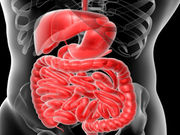Tumors more likely to have DNA mismatch repair deficiency, less likely to be metastatic
THURSDAY, Nov. 10, 2016 (HealthDay News) — Colorectal cancer (CRC) detected after colonoscopy examination is more often located in the proximal colon and more likely to have DNA mismatch repair deficiency (dMMR), according to a study published in the November issue of Gastroenterology.
Elena M. Stoffel, M.D., M.P.H., from the University of Michigan Health System in Ann Arbor, and colleagues performed a population-based cross-sectional study of incident CRC cases in Denmark from 2007 to 2011. Cases were categorized as post-colonoscopy or detected during diagnostic colonoscopy.
The researchers found that 725 of the 10,365 incident CRCs occurred after colonoscopy examinations (7.0 percent). These were more often located in the proximal colon and were more likely to have dMMR compared with CRCs diagnosed in patients with no prior colonoscopy (odds ratios, 2.34 and 1.26, respectively); they were less likely to be metastatic at presentation (odds ratio, 0.65). CRCs diagnosed three to six years after colonoscopy had the highest proportion of proximal and/or dMMR tumors; these features were more frequent among cancer diagnosed up to 10 years after colonoscopy. In an analysis of 85 cases detected after colonoscopy, 23 percent of tumors had BRAF mutations and 7 percent of cases had features of Lynch syndrome.
“We observed that tumors found in patients who have undergone colonoscopy are more often proximal and have dMMR compared to CRCs detected in patients without previous colonoscopies,” the authors write.
Full Text
Copyright © 2016 HealthDay. All rights reserved.








